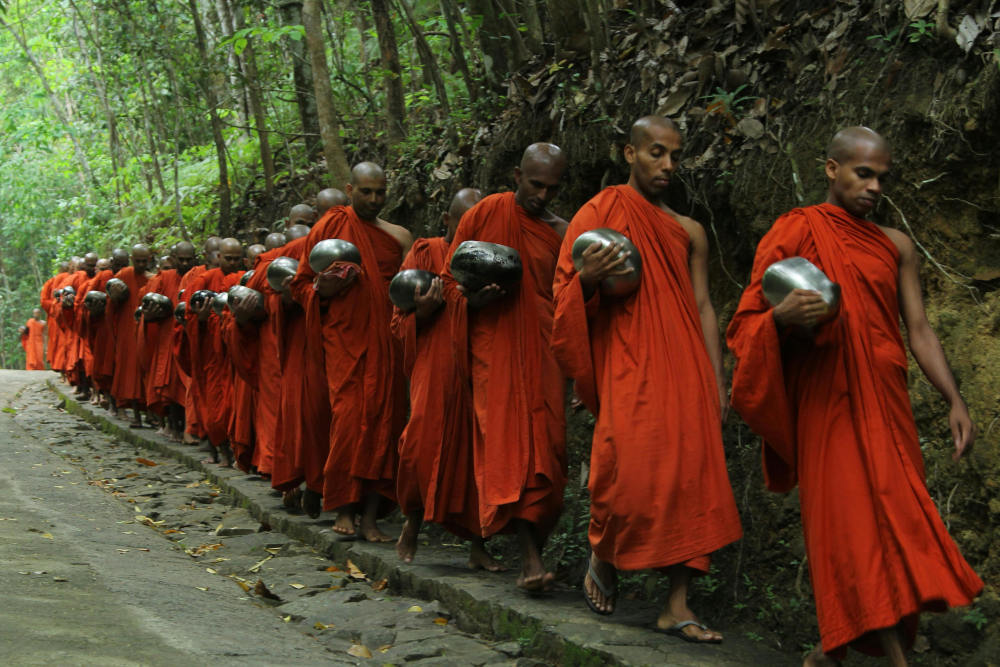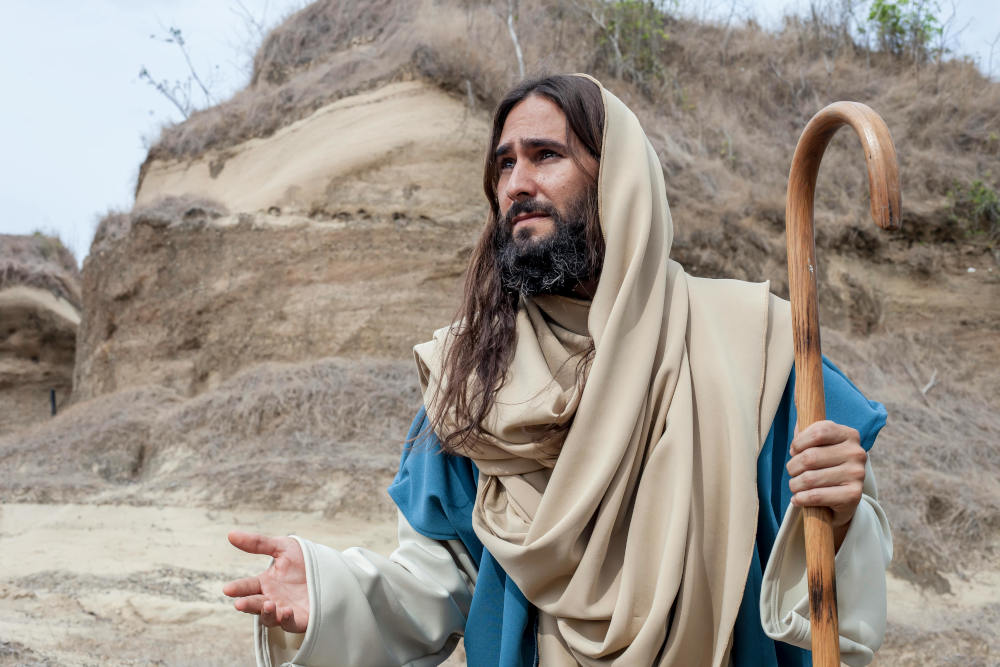
Der tantrische Buddhismus, auch bekannt als Vajrayana oder Esoterischer Buddhismus, ist eine einzigartige und kraftvolle Form buddhistischer Praxis, die Rituale, Symbolik und die direkte Erfahrung der Erleuchtung betont. Er entstand in Indien und verbreitete sich später nach Tibet, Nepal, Bhutan, in die Mongolei und Teile Ostasiens. Trotz seiner tiefen spirituellen Erkenntnisse und seines transformativen Potenzials gilt der tantrische Buddhismus aus verschiedenen Gründen als umstritten, darunter sein geheimnisvoller Charakter, die Anwendung unkonventioneller Praktiken und historische Missverständnisse.
Dieser Artikel untersucht die Ursprünge, Prinzipien und Praktiken des tantrischen Buddhismus und geht der Frage nach, warum er in spirituellen und akademischen Kreisen weiterhin Gegenstand von Debatten ist.
Ursprünge und Grundlagen des tantrischen Buddhismus
Der tantrische Buddhismus entstand um das 7. Jahrhundert n. Chr. als Weiterentwicklung des Mahayana-Buddhismus und vereinte Elemente des Hindu-Tantra, indigener schamanischer Traditionen und fortgeschrittener Meditationstechniken. Vajrayana, was so viel wie „Diamantenfahrzeug“ oder „Donnerkeilfahrzeug“ bedeutet, gilt im Vergleich zu anderen buddhistischen Schulen als schnellerer Weg zur Erleuchtung. Seine Lehren besagen, dass ein Praktizierender durch strenge spirituelle Disziplin und esoterisches Wissen innerhalb eines einzigen Lebens Buddhaschaft erlangen kann.
Die wichtigsten Quellen des tantrischen Buddhismus sind die buddhistischen Tantras – Schriften, die seine Rituale, Gottheitsvisualisierungen und symbolischen Lehren beschreiben. Diese Texte wurden in Tibet bewahrt und weiterentwickelt, wo die Tradition unter der Führung berühmter Meister wie Padmasambhava, Atisha und Tsongkhapa florierte.
Kernpraktiken des tantrischen Buddhismus
Im Gegensatz zu den gängigen buddhistischen Traditionen, die die schrittweise Erleuchtung durch ethisches Verhalten und Meditation betonen, setzt der tantrische Buddhismus auf eine Reihe einzigartiger Praktiken, die die spirituelle Transformation beschleunigen sollen. Dazu gehören:
-
Gottheiten-Yoga – Praktizierende visualisieren sich selbst als erleuchtete Wesen (Buddhas oder Bodhisattvas), um ihre Weisheit und ihr Mitgefühl zu verkörpern.
-
Mantras und Mudras – Heilige Klänge (Mantras) und Handgesten (Mudras) werden verwendet, um spirituelle Energie zu kanalisieren und Segen zu erbitten.
-
Mandalas – Komplexe geometrische Diagramme, die das Universum darstellen und für Meditations- und Initiationszeremonien verwendet werden.
-
Guru-Yoga – Die Hingabe an einen spirituellen Lehrer (Guru oder Lama) wird als wesentlich für den Empfang esoterischer Lehren betont.
-
Sexuelle und energiebasierte Praktiken – Einige fortgeschrittene Praktiken beinhalten die Nutzung sexueller Energie (Karmamudra) und Atemkontrolle (Pranayama), um dualistisches Denken zu überwinden und nicht-duales Bewusstsein zu erfahren.
-
Meditation über Tod und Wiedergeburt – Die Praktizierenden bereiten sich durch Phowa (Bewusstseinsübertragung) auf den Tod vor und erforschen den Zwischenzustand (Bardo) zwischen Tod und Wiedergeburt.
Warum ist der tantrische Buddhismus umstritten?
Trotz seiner tiefen spirituellen Tiefe ist der tantrische Buddhismus aus mehreren Gründen Gegenstand kontroverser Diskussionen:
1. Geheimhaltung und eingeschränkte Lehren
Tantrische Lehren werden traditionell nur an eingeweihte Schüler weitergegeben, die eine strenge Ausbildung durchlaufen haben. Diese Geheimhaltung soll die Praktizierenden vor Missverständnissen oder Missbrauch mächtiger Techniken schützen. Dies hat jedoch zu Skepsis und Missverständnissen gegenüber der Tradition geführt. Einige Kritiker argumentieren, Geheimhaltung fördere Elitismus und mangelnde Transparenz.
2. Verwendung von Ritualen und Symbolik
Viele tantrische Rituale beinhalten komplexe Symbole, darunter zornige Gottheiten, Schädelbecher und Ritualgegenstände wie den Vajra (Donnerkeil) und die Glocke. Für Außenstehende können diese Symbole esoterisch, abergläubisch oder sogar verstörend wirken. Kritiker interpretieren diese Rituale oft als Götzendienst, obwohl sie in Wirklichkeit als tiefgreifende Werkzeuge der Transformation dienen.
3. Sexuelle Praktiken und Missverständnisse des Tantra
Einer der umstrittensten Aspekte des tantrischen Buddhismus ist sein Umgang mit Sexualität. Während sich die meisten Vajrayana-Lehren auf innere Alchemie und Energietransformation konzentrieren, beschreiben einige Texte die sexuelle Vereinigung als Weg zur Erleuchtung. Diese Praktiken sind stark symbolisch und erfordern strenge ethische Disziplin. Sie wurden jedoch insbesondere im Westen sensationsheischend und falsch dargestellt, wo „Tantra“ oft fälschlicherweise mit rein sexuellen Praktiken ohne spirituellen Kontext in Verbindung gebracht wird.
4. Verbindung mit Magie und übernatürlichen Kräften
Im tantrischen Buddhismus finden sich Hinweise auf Siddhis, spirituelle Fähigkeiten wie Hellsehen, Heilung und sogar körperliche Transformation. Obwohl diese eher als Nebeneffekte tiefer Meditationspraxis denn als Ziel angesehen werden, argumentieren einige Kritiker, dass sie von der Kernbotschaft des Buddhismus, der Befreiung vom Leiden, ablenken.
5. Politische und religiöse Konflikte
Historisch gesehen stieß der tantrische Buddhismus auf Widerstand anderer buddhistischer Traditionen und religiöser Autoritäten. In Indien wurde er während des Aufstiegs orthodoxerer Hindu-Bewegungen und des Niedergangs des Buddhismus unterdrückt. In Tibet führten politische Auseinandersetzungen zwischen verschiedenen buddhistischen Schulen (wie der Gelug- und der Nyingma-Tradition) manchmal zu Streitigkeiten über tantrische Praktiken. Darüber hinaus führte die chinesische Invasion Tibets im 20. Jahrhundert zu weiterer Unterdrückung und Missverständnissen des tantrischen Buddhismus.
Die Rolle des tantrischen Buddhismus in der modernen Spiritualität
Trotz Kontroversen erfreut sich der tantrische Buddhismus weiterhin großer Beliebtheit, insbesondere in den tibetisch-buddhistischen Traditionen. Viele seiner Lehren haben Eingang in moderne Achtsamkeitspraktiken, Energieheilung und zeitgenössische Spiritualität gefunden. Der Dalai Lama und andere tibetische Lehrer haben dazu beigetragen, die Kluft zwischen den Lehren des Vajrayana und dem modernen Publikum zu überbrücken, indem sie Mitgefühl, Weisheit und ethisches Verhalten betonten.
Das westliche Interesse an Tantra ist jedoch weiterhin gemischt. Während einige ernsthaft Praktizierende die authentischen Lehren des Vajrayana studieren, haben viele kommerzialisierte Formen des „Neo-Tantra“ dessen Bedeutung verzerrt und konzentrieren sich ausschließlich auf Sexualität statt auf Erleuchtung. Dies hat zu weiteren Missverständnissen und Kontroversen rund um die Tradition beigetragen.
Abschluss
Der tantrische Buddhismus ist eine tiefgründige und komplexe spirituelle Tradition, die durch Rituale, Meditation und Transformation einen schnellen Weg zur Erleuchtung bietet. Obwohl seine Geheimhaltung, die Verwendung von Symbolik und die Einbeziehung sexueller Praktiken zu Kontroversen geführt haben, werden diese Aspekte außerhalb ihres beabsichtigten spirituellen Kontextes oft missverstanden.
Der tantrische Buddhismus bleibt einer der kraftvollsten und zugleich rätselhaftesten Zweige des Buddhismus. Seine Lehren bieten, wenn sie mit der richtigen Anleitung und ethischer Integrität praktiziert werden, denjenigen, die den Weg des Vajrayana beschreiten, weiterhin tiefe Weisheit und transformierende Erfahrungen.
War dieser Artikel hilfreich für Sie? Bitte teilen Sie uns in den Kommentaren unten mit, was Ihnen gefallen oder nicht gefallen hat.
About the Author: Alex Assoune
Wogegen Wir Kämpfen
Weltweit-Konzerne produzieren in den ärmsten Ländern im Übermaß billige Produkte.
Fabriken mit Sweatshop-ähnlichen Bedingungen, die die Arbeiter unterbezahlt.
Medienkonglomerate, die unethische, nicht nachhaltige Produkte bewerben.
Schlechte Akteure fördern durch unbewusstes Verhalten den übermäßigen Konsum.
- - - -
Zum Glück haben wir unsere Unterstützer, darunter auch Sie.
Panaprium wird von Lesern wie Ihnen finanziert, die sich unserer Mission anschließen möchten, die Welt völlig umweltfreundlich zu gestalten.
Wenn Sie können, unterstützen Sie uns bitte monatlich. Die Einrichtung dauert weniger als eine Minute und Sie werden jeden Monat einen großen Beitrag leisten. Danke schön.































0 Kommentare